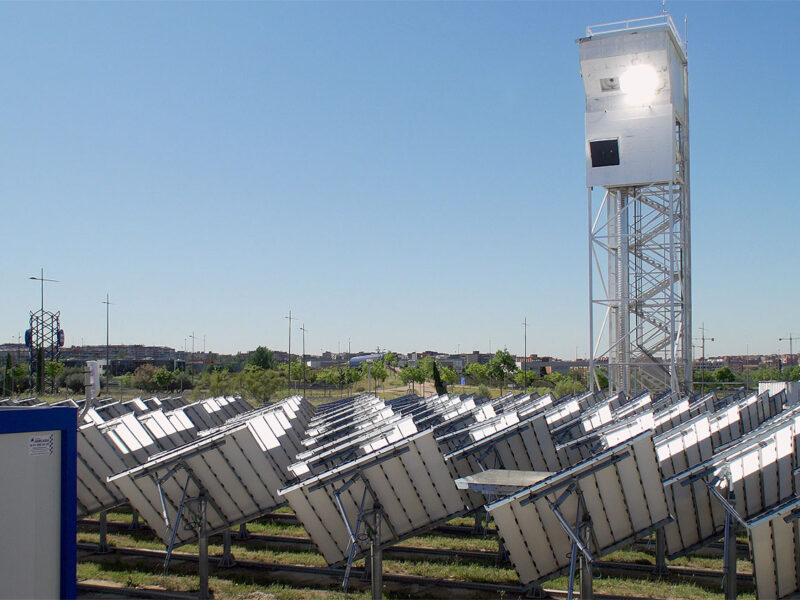
Solar plant produces kerosene from sunlight, water and CO2
The aim of the Sun-to-Liquid research project is to produce synthetic fuels from water and CO2 using the Fischer-Tropsch process, which has been known for almost 100 years. These fuels could be used in transport (road traffic, aviation). Because the fuel produced could be used in existing combustion engines and aircraft turbines, researchers see this as a way to a CO2-neutral traffic turnaround. In particular, aviation, where the product life of aircraft and turbines is several decades, would benefit from this. The problem so far has been that the process is very energy-intensive and therefore could hardly be used on a large scale.
The success of the Sun-to-Liquid project could bring the production of synthetic fuels a step closer to industrial feasibility. According to project coordinator Andreas Sizmann of the Bauhaus Luftfahrt research institute, this technology could have a major impact on the transport sector, especially for aviation and shipping, which continue to rely on liquid fuels over long distances. “We have come one step closer to the goal of living on a sustainable energy income instead of burning our fossil energy heritage,” said Sizmann.
“The sun-to-liquid reactor technology and the integrated chemical plant have been validated under the typical conditions for industrial fuel production,” explains Prof. Aldo Steinfeld of ETH Zurich university, who is leading the development of the solar thermochemical reactor that is central to the project.
In the previous Solar-Jet project, the researchers developed the technology and produced solar kerosene under laboratory conditions for the first time. Sun-to-Liquid took this technology to the next development stage and tested it under real conditions on a solar tower. For this purpose, a unique solar plant was erected on the premises of the IMDEA Energy Institute in Móstoles, Spain, especially for the project. A heliostat field following the sun concentrates the sunlight by a factor of 2500, which corresponds to three times the concentration of solar systems currently used for energy generation,” explains Dr. Manuel Romero of IMDEA Energy. The very high solar radiation intensity, confirmed by flux density measurements carried out by the German Aerospace Center (DLR), makes it possible to reach temperatures of over 1500 degrees Celsius in a solar reactor.
The reactor developed by the project partner ETH Zurich produces a so-called synthesis gas from water and CO2 by a thermochemical redox reaction – a mixture of hydrogen and carbon monoxide. A special Fischer-Tropsch plant developed by project partner HyGear converts this synthesis gas into kerosene on site.
In the Sun-to-Liquid project, DLR was responsible for measuring the solar field and concentrated solar radiation, for developing concepts for optimised heat recovery and for simulating the reactor and the entire plant on the computer. Scientists from the DLR Institutes of Solar Research and Combustion Technology used virtual models to scale up the solar production of kerosene from the laboratory to the megawatt scale and to optimise the design and operation of the plant. For Sun-to-Liquid, DLR solar researchers developed a flux density measurement system that makes it possible to measure the intensity of highly concentrated solar radiation directly in front of the reactor with minimal interruption to operation. This data is necessary to operate the plant safely and to determine the efficiency of the reactor.
Compared to fossil fuel, Sun-to-Liquid reduces CO2 emissions by more than 90 percent. The plant is intended to extract the raw material CO2 from the atmosphere in the long term. The future global demand for kerosene can thus be met by regenerative solar fuels that are compatible with the existing fuel infrastructure.
Related articles:
NASA CO2 challenge looks to advance biomanufacturing in space
Hydrogen from sunlight emerges as green energy source
Philips speeds push into solar-powered lighting
 If you enjoyed this article, you will like the following ones: don't miss them by subscribing to :
eeNews on Google News
If you enjoyed this article, you will like the following ones: don't miss them by subscribing to :
eeNews on Google News




